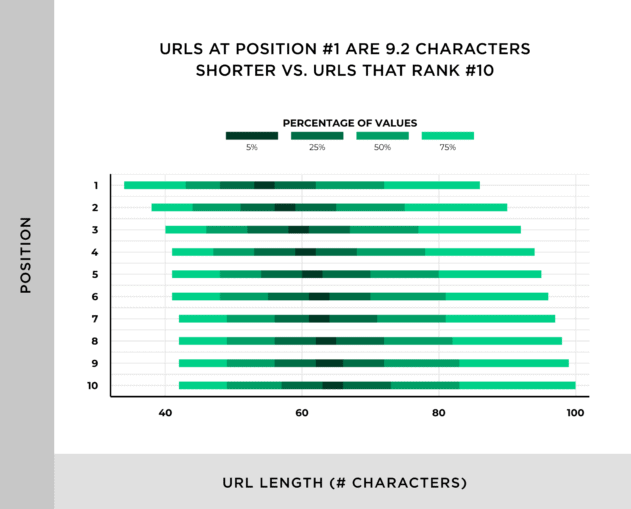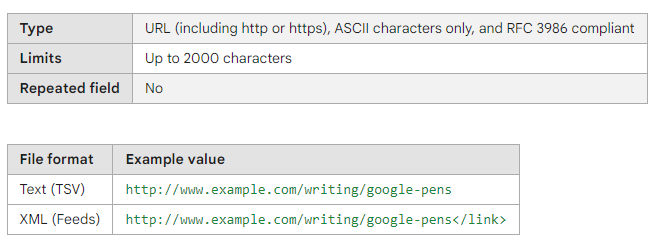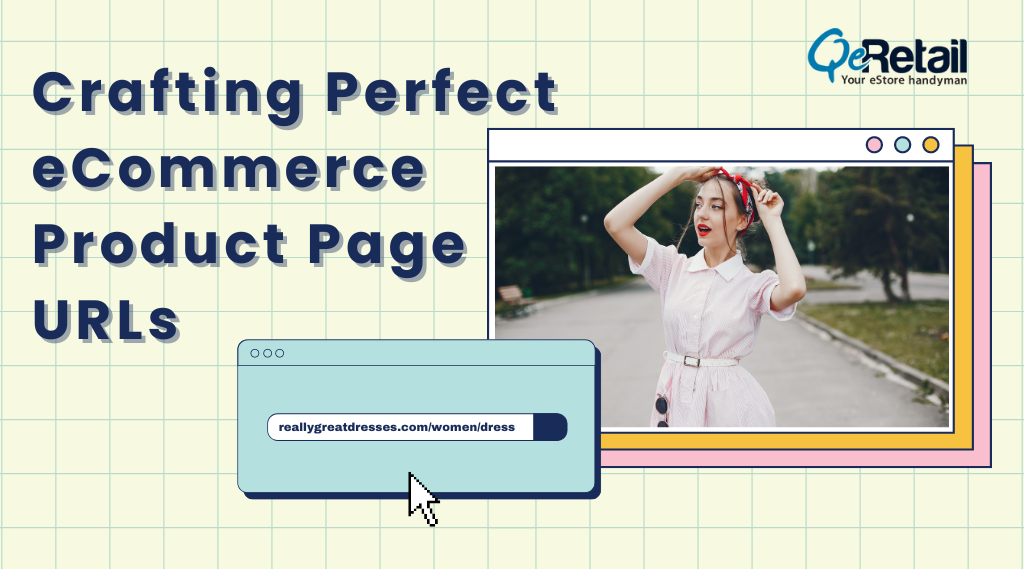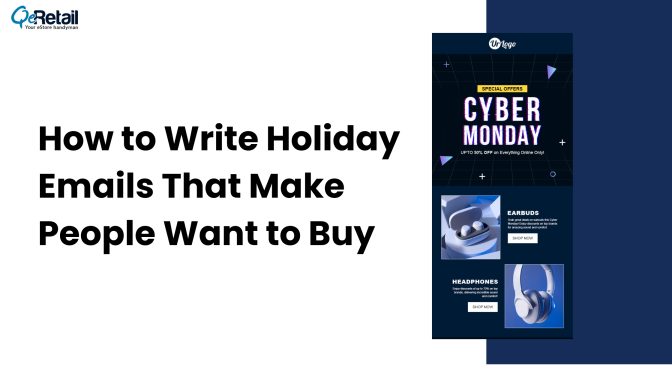In the world of eCommerce, every detail matters. From captivating product descriptions to high-quality images, each element contributes to the customer experience and, ultimately, your sales. But have you ever considered the importance of a product URL?
It might seem like a minor detail, but a well-crafted product URL can be a powerful tool for both user experience (UX) and search engine optimization (SEO).
Table of Contents
What is the ideal URL structure for an eCommerce website?
In fact, in 2016, George Mueller himself clarified that a product URL is an important Google ranking factor.
So, what makes a product URL “perfect”?
Let’s delve into the anatomy of a product URL and explore the key considerations for crafting URLs that work for your customers and search engines.
The Anatomy of a Product URL: Breaking Down the Essential Components
Imagine a product URL like an address leading to your virtual storefront.
Here’s what you’ll typically find, taking the example of this USA-based chocolate manufacturer’s online store:
- Domain Name: This is the foundation of your online presence, just like Santa Barbara Chocolates’ web address: https://www.santabarbarachocolate.com/.
- Product Category (Optional): This helps users navigate within the store’s product range. Santa Barbara Chocolates uses a category URL like https://www.santabarbarachocolate.com/vegan-chocolate-chips/ to showcase all their vegan chocolate products.
- Product Identifier: This is the unique identifier for the specific product. Here, Santa Barbara Chocolates uses a descriptive phrase like https://www.santabarbarachocolate.com/vegan-cocoa/ for their “Rainforest Dark Vegan Cacao Powder.” It acts as a clear indicator of the product within the vegan chocolate category.
- Variation Attributes (Optional): This applies to products with variations like size or color. Santa Barbara Chocolates doesn’t seem to use variations for their vegan cocoa powder in this example. However, if they offered different sizes (e.g., 1lb, 5lb), they might include it after the product identifier, separated by hyphens or as a query parameter (e.g., /vegan-cocoa/1lb or /vegan-cocoa?size=5lb).
Website with a NO-COST SEO AUDIT!
- Uncover Blind Spots
- New Keyword Opportunities
- Get Competitive Insights
- Future-Proof your eStore
 No Risk
No Risk No Obligation
No Obligation No Credit Card Required
No Credit Card RequiredKey Considerations to Create Perfect Product URL for eCommerce Success
Now that you understand the building blocks, let’s explore the key ingredients for crafting a perfect product URL, including a URL structure example for clarity:
1. Crafting URLs That Clearly Communicate Your Product
- Short & Sweet: Aim for 40-100 characters, balancing information with brevity.
- Descriptive Keywords: Use words that accurately reflect the product (e.g., “blue-cotton-t-shirt” not “item-1234“).
A study by Backlinko found that the average URL for a top 10 search result on Google lands around 66 characters. Interestingly, most URLs on the first page of Google tend to be similar in length, typically falling between 40 and 100 characters.

2. Search Engine Optimization (SEO) to Boost Website’s Visibility with URL Structure
- Keyword Power: Include relevant keywords to help search engines understand your product.
- Improved Ranking: Keywords in the URL can potentially boost your search ranking.
3. Enhancing Navigation and Accessibility with Clear URLs
- Readability Matters: Use hyphens (-) to separate words for clear reading (e.g., “blue-t-shirt“).
- Skip the Special Characters: Avoid confusing characters like underscores or ampersands.
4. Consistency for Variations: Maintaining URL Structure for Product Variations
- Same Base URL: Maintain a consistent base URL for products with variations (color, size).
- Specify Variations: Use query parameters or path variations to show different options (e.g., “?color=red&size=medium“).
- Benefits: This helps search engines recognize variations, and users navigate options easily.For example,
- https://www.jiffyshirts.com/hanes-5280.html?ac=Athletic+Royal
- https://www.jiffyshirts.com/hanes-5280.html?ac=Stonewashed+Blue
- https://www.jiffyshirts.com/hanes-5280.html?ac=Texas+Orange
- https://www.jiffyshirts.com/hanes-5280.html?ac=Candy+OrangeAll of these are variations of one product—color variants, to be specific. The URL structure is the same: It mentions the product and the variant as ?ac=color-name.This helps Google figure out the variants of the same product.
Bonus Tips for Perfecting Your Product URLs
Here are some additional points to consider:
- Product Category: Including the product category in the URL structure can further enhance navigation within your store, especially for websites with a vast product selection.
- HTTPS: Using HTTPS in your product URLs ensures secure connections for users and may offer a slight SEO advantage.
- Canonical URLs for Complex Products (Advanced): A canonical URL is a designated “master” version of a product page that has variations (color, size). It helps search engines understand the primary page and avoid duplicate content issues.
- Mobile-Friendliness: A significant portion of e-commerce traffic originates from mobile devices, so make sure your product URLs are easy to read and navigate. Avoid excessively long URLs that become difficult to manage on smaller screens.
- Data-Rich Snippets with Structured Data: Utilize structured data markup to provide search engines with richer information about your products. This can lead to enhanced data snippets displayed in search results, potentially improving click-through rates.
- A/B Testing: Consider A/B testing different URL structures to see which variations resonate best with your target audience. This can help you determine the optimal balance between clarity, conciseness, and SEO effectiveness.
- Brand Consistency: Maintain consistency in your URL structure across your entire website. This includes using the same separators (hyphens preferred), case sensitivity, and overall organization, making your store’s navigation more intuitive.
- Regular Review & Updates: As your product offerings evolve, regularly review and update your product URLs to reflect any changes. This ensures continued clarity and accuracy for both users and search engines.
Website with a NO-COST SEO AUDIT!
- Uncover Blind Spots
- New Keyword Opportunities
- Get Competitive Insights
- Future-Proof your eStore
 No Risk
No Risk No Obligation
No Obligation No Credit Card Required
No Credit Card RequiredGuidelines of a Product URL by Google
As per Google, you must provide a product detail page link [product_page_url] that refers to a product details page containing the richest and most accurate content for the exact product variant. This link should reside on a domain you own and manage, and it should not link to an external e-commerce platform. This link won’t be displayed to users.

For Google to accurately interpret your data, please follow these formatting instructions.

URL Structure for Product Listing to Get Listed on Google
- Start with the Right Format: Use secure URLs starting with “https://” and follow standard web address formats (RFC 3986).
- Own Your Domain: Ensure the URL includes your verified domain name from your Manufacturer Center account setup.
- Encode Special Characters: Replace symbols and spaces with URL-encoded entities (e.g., “&” becomes “%26”) for proper display.
Best Practices for eCommerce Websites to Optimize Your Product Page URLs
- Stable URLs for a Smooth Experience:
- Use permanent URLs that don’t change unless your product landing page moves.
- Avoid URLs containing timestamps or elements that might fluctuate when submitting data.
- Precise Variant Selection:
- Link to the exact product variation on your landing page.
- Remember to submit still specific variant details (color, size, age group) using relevant attributes.
- Schema.org Microdata for Enhanced Display:
- Utilize microdata to clarify how elements on your landing page correspond with your product information.
- This ensures seamless matching between your product data and the displayed variant on the landing page.
By following these guidelines, you can create accurate and informative product page URLs that meet Google’s requirements and enhance user experience.
Let’s hop on to see some examples of good and bad product page URLs.
Website with a NO-COST SEO AUDIT!
- Uncover Blind Spots
- New Keyword Opportunities
- Get Competitive Insights
- Future-Proof your eStore
 No Risk
No Risk No Obligation
No Obligation No Credit Card Required
No Credit Card RequiredWhy Clear and Structured URLs Matter for Your eCommerce Store to Google
Imagine Google trying to navigate your store blindfolded.
That’s what happens with poorly structured URLs! A well-organized URL system helps both search engines and customers find your products quickly and easily. Here’s what can go wrong with bad URLs:
- Duplicate Content: Google might think you have duplicate product pages, wasting their resources and potentially hurting your ranking. This can happen if you use features like fragment identifiers (“#”) to display different variations of the same product.
Example:
- Bad: [yourstore.com]/product/t-shirt#black (Black T-Shirt)
- Bad: [yourstore.com]/product/t-shirt#white (White T-Shirt)
These appear on the same page as Google, even though they’re different colors.
- Wasted Crawling: Google might try to crawl the same product multiple times because the URLs look slightly different. This can slow down your website for both Google and your customers.
Example:
- Bad: [yourstore.com]/product/black-t-shirt
- Bad: [yourstore.com]/product?sku=1234 (Might be the same black T-Shirt)
The URLs look different, but Google might not know they show the same product.
- Infinite Pages Illusion: Google might think your website has endless pages if your URLs include constantly changing information like timestamps. This makes it harder for Google to find all your valuable content.
Example:
- Bad: [yourstore.com]/about?now=12:34am
- Bad: [yourstore.com]/about?now=12:35am (Same “About Us” page)
Both URLs seem like different pages, even though they show the same information.
By creating clear and informative URLs, you make it easier for Google and customers to navigate your store, ultimately boosting your sales and search ranking.
Website with a NO-COST SEO AUDIT!
- Uncover Blind Spots
- New Keyword Opportunities
- Get Competitive Insights
- Future-Proof your eStore
 No Risk
No Risk No Obligation
No Obligation No Credit Card Required
No Credit Card RequiredExamples of Good and Bad Product URLs
Let’s see these product URL concepts in action! Here are some examples:
Good URLs:
- https://www.casio.com/us/watches/gshock/product.GBD-H2000-1A/: This URL is short (the slug is just 36 characters long), uses clear, descriptive words (“watches, G-Shock, and the Product name”), and accurately reflects the products.
- https://www.patagonia.com/product/mens-down-sweater-hoody/84702.html: This URL is concise (around 34 characters) and combines a relevant brand term (“Patagonia”) with a descriptive product name (“down sweater hoody”).
- https://www.samsung.com/us/smartphones/galaxy-s23-ultra/: This URL incorporates relevant keywords (“galaxy s23 ultra”) that potential customers might search for.
- https://www.bestbuy.com/site/searchpage.jsp?id=pcat17071&st=macbook+pro+14+inch: This URL includes relevant keywords (“MacBook pro 14”), which is also the product name.
- https://www.nike.com/t/air-force-1-07-mens-shoes-jBrhbr/CW2288-111: This URL is easy to read with hyphens separating words (“air force 1 mens shoes”) and avoids special characters.
- https://www.everlane.com/products/womens-organic-cotton-crew-white: This URL uses a clear and descriptive phrase for the product, along with a clear keyword, making it easily understandable for users.
- https://www.adidas.com/us/men-superstar & https://www.adidas.com/us/women-superstar: These product collection pages maintain the same base URL (“/superstar-shoes”) but use query parameters (“?gender=men” or “?gender=women”) to specify variations.
Remember, a well-crafted product URL should be informative, user-friendly, and SEO-friendly. By following these guidelines and using the structure of URL with example above as inspiration, you can create product URLs that effectively showcase your products and attract more customers to your e-commerce store.
Conclusion
By following these key considerations and best practices, you can create product URLs that are informative, user-friendly, and SEO-friendly. Remember, a well-crafted product URL acts as a digital signpost, guiding both customers and search engines to the right product page. Here’s a quick recap:
- Clarity and Conciseness: Keep it clear and short (40-100 characters).
- SEO: Include relevant keywords to improve search ranking.
- User Experience: Make it easy to read and understand with hyphens (-).
- Consistency for Variations: Maintain the same URL for variations with clear variation identifiers.
By implementing these practices, you can lay the foundation for a user-friendly and search-engine-optimized eCommerce experience, ultimately driving more traffic and sales to your online store.
And remember, QeRetail, your eStore handyman, is always there to cater to all your eCommerce SEO needs.
Contact us today for a free SEO audit and identify all the URL issues along with other SEO technical issues.
Website with a NO-COST SEO AUDIT!
- Uncover Blind Spots
- New Keyword Opportunities
- Get Competitive Insights
- Future-Proof your eStore
 No Risk
No Risk No Obligation
No Obligation No Credit Card Required
No Credit Card Required






